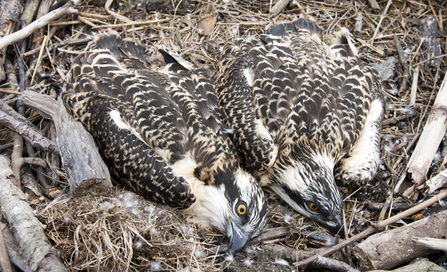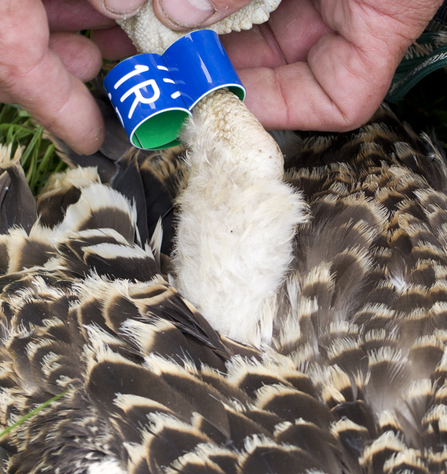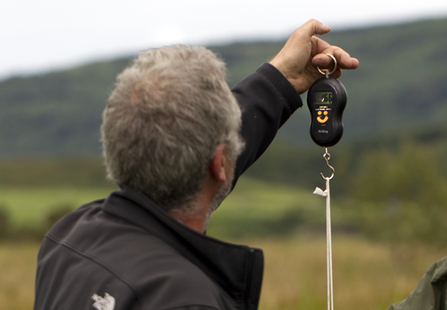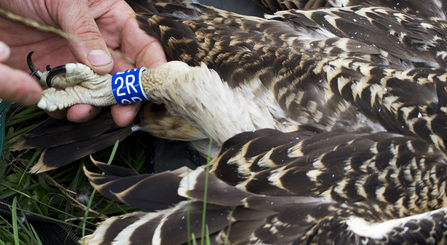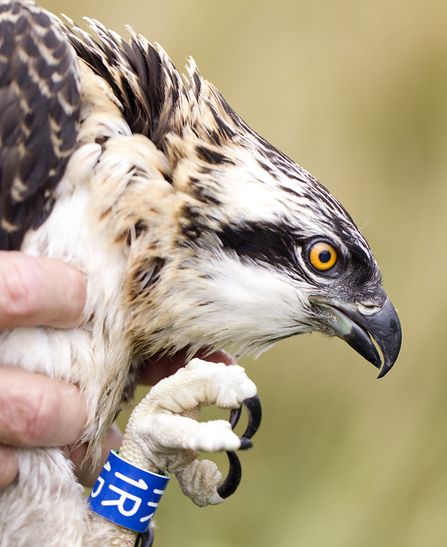On Tuesday morning, August 6th, we ringed both our osprey chicks.
On a cloudy but windless day the ringing team approached the nest at around 09:15 and the first thing that took our eye was Monty's second nest. It's huge!!
Lots of thoughts on why Monty is building this new nest - see here
Monty's second home - just above his main nest


